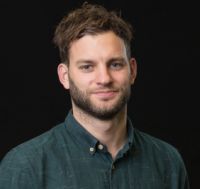Returning to Max's House
By Tom McNeil
19 January 2024

In 2022, Max Fordham House in North London became the first residential building in the UK to be verified as net zero carbon for both construction and operational energy-related emissions. Since Max’s passing in January 2022, the house has been occupied by Architect Dominic McKenzie and his family.
Max loved the house and in terms of its energy performance, it performed incredibly well. But as you’d expect, Max was very conscious of his energy consumption and, being involved in all the design decisions, knew exactly how to operate the systems to get the most out of it in terms of comfort and energy saving.
We wanted to go back and find out how the house works for a busy family and look at how it fares in terms of its energy consumption. We caught up with Dominic and asked him a few questions.
We first asked about the heating system and how well the house stays warm. Dominic explained that they have found the house to be really comfortable. They flicked a switch to turn on the electric heating coil in the MVHR (mechanical ventilation with heat recovery) in mid-autumn 2022 and this worked in the background to keep the house warm throughout winter. This works by monitoring the air temperature in the house and if the temperature drops below 20°C (measured through an air sensor in the MVHR extract duct), the heater pulses on to deliver some heat to the fresh supply air - there are no radiators and no underfloor heating. Dominic also said that the house feels fresh in winter without the need to open the windows.
Dominic explained that there have been some issues with the insulated shutters which are controlled automatically. These use a mechanical mechanism to open and close which has not proved robust enough and some have failed. However the shutters can still easily be operated manually and the family draw these at night both for privacy and to keep the heat in during winter. Dominic has a preference for simple controls and manual user operation is really important to him, but some of the systems and controls are a little complex and are operated through a Loxone control system. The operation of the blinds was relatively complex and something that Max was keen to experiment with but fortunately the system works well when also operated manually.
The hot water is delivered by an air source heat pump and Dominic praised its reliability and how quiet the system is, saying “the ASHP is really great. It’s really quiet so you don’t even notice it and the hot water is always hot.”
The MVHR has been a success too, which works in the background with very little noise. The family turn the system to ‘unoccupied’ mode when they go away but generally leave it on the standard setting which seems to deliver enough fresh air to keep the house fresh. There is however a rogue boost switch by the downstairs toilet door, which has a tendency to get mistaken for a light switch!
A review of the energy bills found that annual electricity consumption (grid import) is currently 39kWh/m²/yr (which includes the contribution of the rooftop photovoltaic panels). This closely aligns with the consumption when Max lived there so it’s good to see that the house remains very low energy despite now being occupied by a busy family.
It was great to visit, and the house certainly feels very calm and private with the courtyard garden, natural materials and well-established greenery. Thanks to Dominic for the tour and we’re glad you’re enjoying the house!







.jpg)
Comments
Add a comment